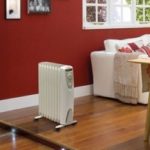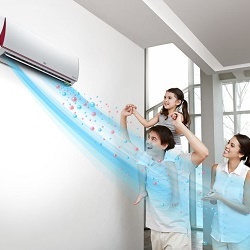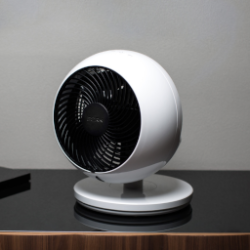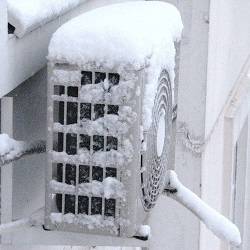Can infrared heaters replace stationary heating in the house
Of all the variety of heating appliances for the home, the most popular infrared heaters. They can warm any local area or the entire room as a whole. Most people successfully use them as an additional source of heat. But others are wondering if infrared heating can completely replace the central system. Like it or not, we will understand below.
Content
Principle of operation
IR heaters work according to another principlethan the rest of the heating devices.It lies in the fact that the rays they emit do not heat the air itself, but transfer their heat to various objects (floor, walls, furniture, the human body). Their action is akin to the action of sunlight in nature.
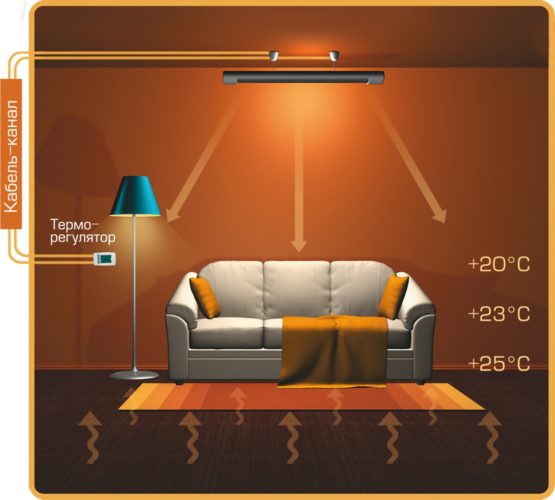
The principle of operation of the infrared heater
Those who wonder what an infrared heater is, first of all, you should find out its classification. Devices differ in the following parameters:
- The source of energy used.
- Type of radiators (heating elements).
- The length of the applied wave radiation.
- Type of use of devices (mobile or stationary).
- Location and installation methods
Classification
By used energy source
All infrared heating devices are divided into 2 main types:
- Gas, used, as a rule, for heating industrial premises (they have very high power and they are more dangerous to use).
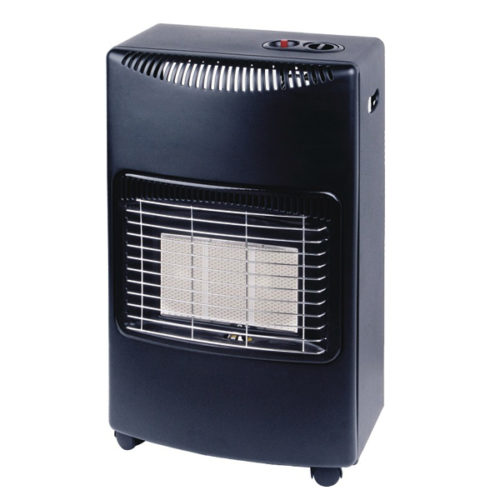
- Electric heaters, which are considered to be the most excellent option for residential heating, both in the city and in summer cottages, in country houses and cottages.
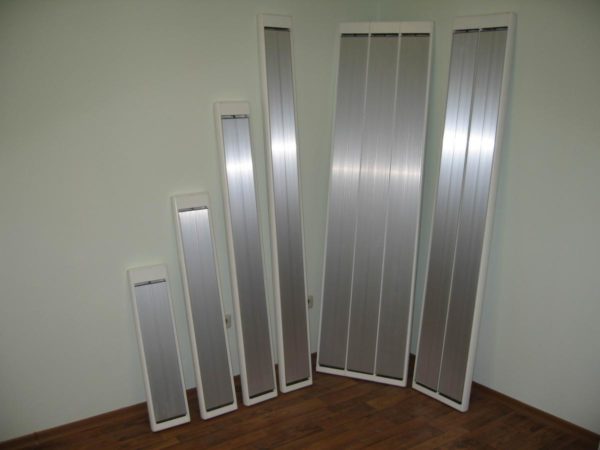
For heating rooms in private houses and apartments, electric infrared installations are usually used, as the most affordable and safe. Their construction consists of the following parts:
- Body made of steel or aluminum, heat-resistant plastic or heat-resistant glass.
- Heating elements (heating elements, halogen, quartz or ceramic lamps, film panels, carbon fiber spiral).
- Reflector (reflector) with thermal insulation. Often this is aluminum foil.
- Mounts for mounting.
- The control unit (which includes a thermostat, an automatic shutdown sensor for overheating or tipping, a remote control, the latter is usually included in the ceiling versions of heaters).
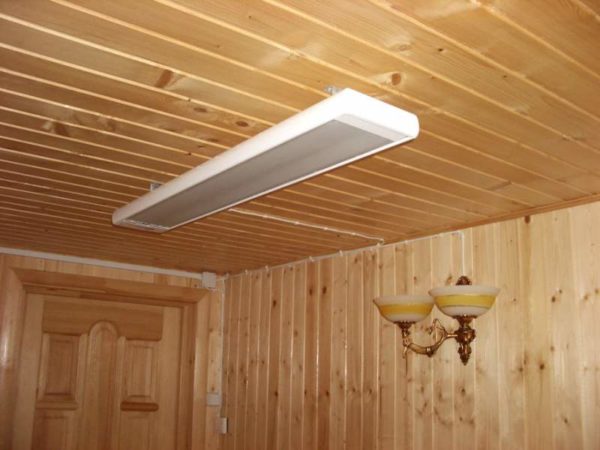
According to the type of heating elements used
The type of heating elements of heating devices depends on the possibility of their use in everyday life:
- Quartz or tungsten heaters operating on the principle of spiral heating. The vacuum quartz tube contains a tungsten coil that can heat up to 2 thousand degrees. Because of this, they are rarely used for domestic purposes.
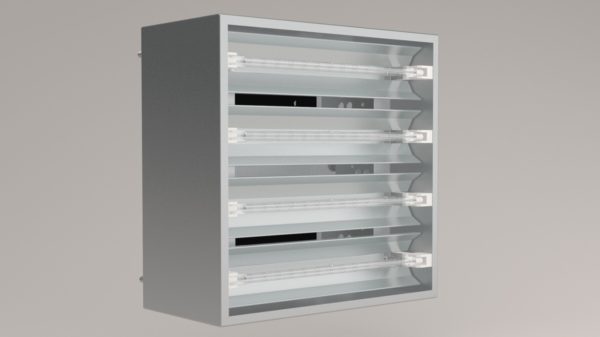
- Halogen, with inert gas enclosed in the tube, they shine brightly, they heat quickly, they consume a lot of electricity.
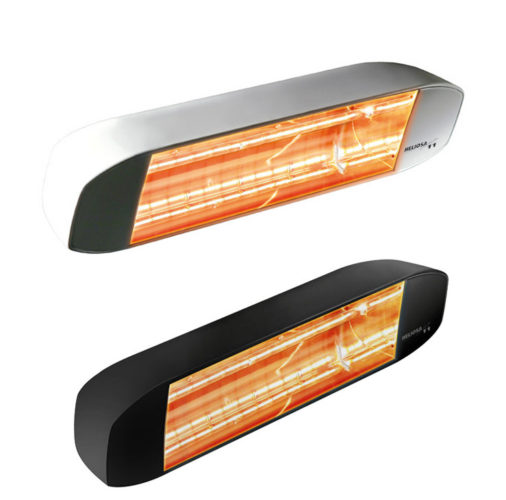
- Carbon fiberare similar in the way they work with tungsten devices,but instead of the helix in the tube there is a special carbon fiber in the form of a thread, which has a high heating rate. These heating devices do not dry the air; when they turn off, they cool down quickly and consume relatively little electricity.
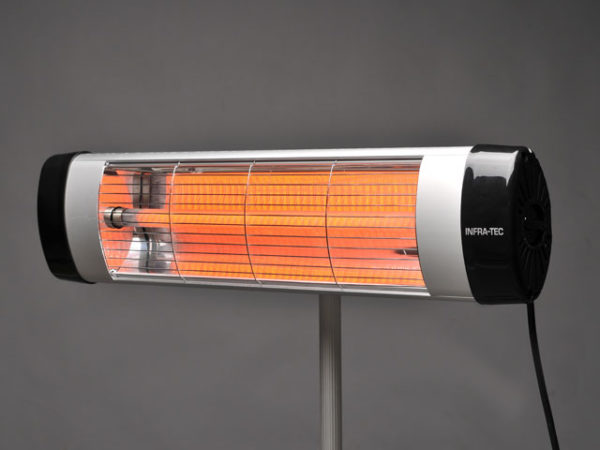
- Ceramic, with a heating element in the form of a spiral made of metal with high resistance and transferring heat to the ceramic panel of the device. It can be used in moisture-containing rooms.
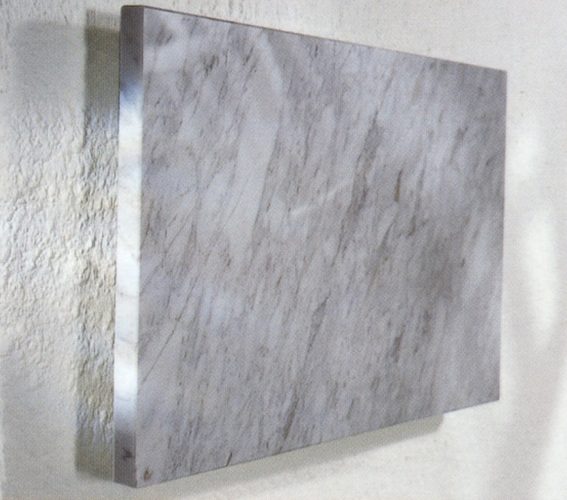
- Mikatermicheskie, or film IR heaters with a heating element in the form of thin non-metallic plates of graphite, mounted on a special thermostatic film. This is the only device that has a flexible design. It can be mounted on the floor, mounted on a wall or ceiling. It is aesthetically beautiful, imperceptible to the eye, silent.
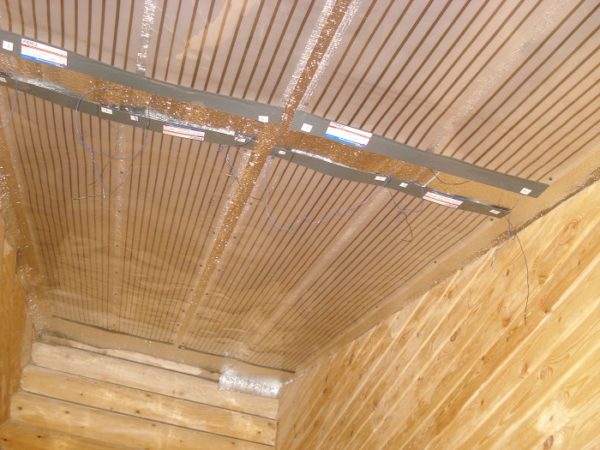
The length of the wave radiation
In all IR devices, heating is based on the principle of infrared radiation of heat waves, which can have different lengths:
- Long-wave models, usually have a rather low temperature of heating elements (100-600С). They are suitable for use in residential areas, even with low (up to 3 m) ceilings.They are economical, they consume little electricity. Long-wave (50-200 microns) devices do not give a bright light, but have a comfortable soft radiation. This type of electric heaters is excellent as the main heating of residential premises, provided they are well insulated and heated. You can use them for space heating in urban apartments, cottages, summer houses. Devices are harmless and safe.
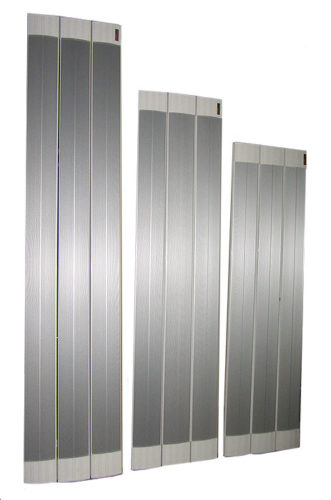
- Medium-wave models of IR devices have a high temperature of heating elements (600-1000С). It is desirable to use them in rooms with a ceiling height of more than 3 m. Medium wave (2.5-50 microns) devices are best used for commercial and administrative premises.
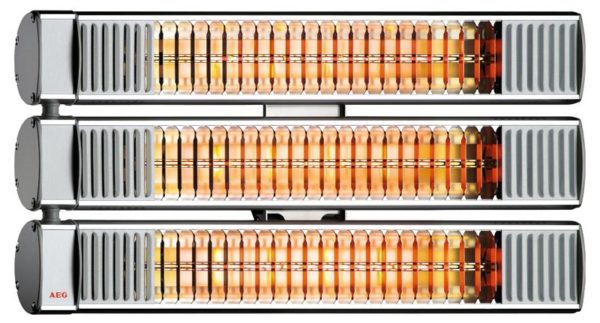
- Shortwave models with the highest temperature of heating elements (more than 1000 ° C) are used mainly in industrial facilities, warehouses and open spaces. Such waves can have an adverse effect on humans, so their use is undesirable in living rooms. Shortwave (0.7-2.5 microns) devices usually operate on the basis of halogen lamps. They can also be used on open areas, terraces, arbors. Devices are not afraid of falling snow and rain.
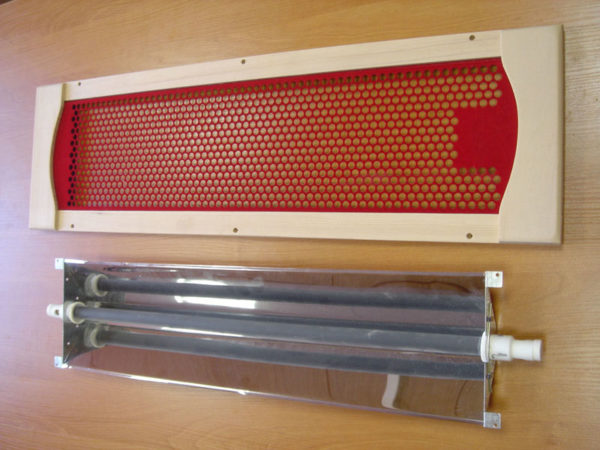
By type of use
By type of application, IR heaters are divided into:
- Mobile, low-cost models that complement the main source of heating can stand anywhere and easily be transported from one room to another.
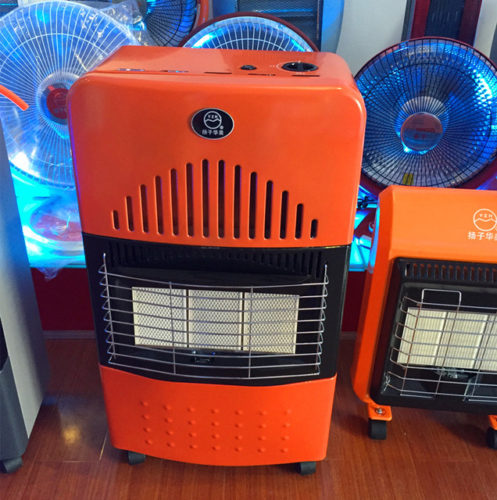
- Stationary, most often used as a replacement for central heating.
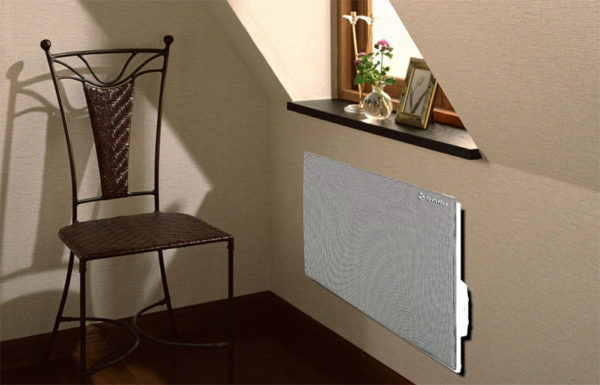
Stationary heaters, in turn, are divided by the place of their installation.
Usually, these or other fasteners are included in the IR device kit, depending on the type of location of the specific device:
- Ceiling, the most popular and comfortable models that do not take up much space. Sometimes they are not just fixed or hung, but embedded in suspended ceilings, which is very convenient. In addition, suspended models have a large range of space heating, in comparison with other models. As an alternative to replacing central heating, they fit perfectly.
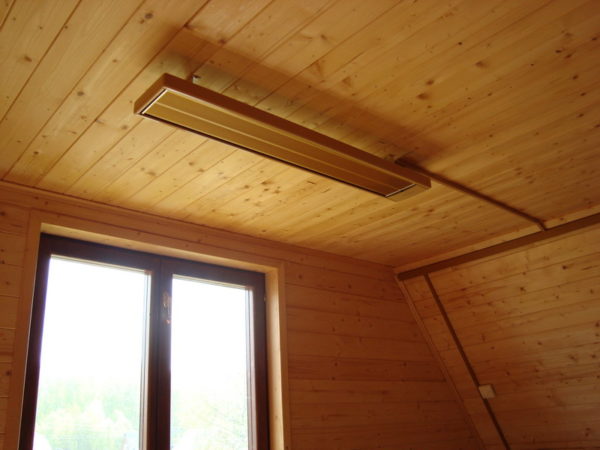
- Wall heaters are also popular for ease of installation and use. But due to lower location, their infrared rays meet more obstacles in their path and therefore can not always heat the room properly.They can be located in certain places for heating local zones (favorite reading chair, sofa for collective watching TV in comfortable conditions, etc.). For better warming up of the room, it is recommended to fix the device higher.
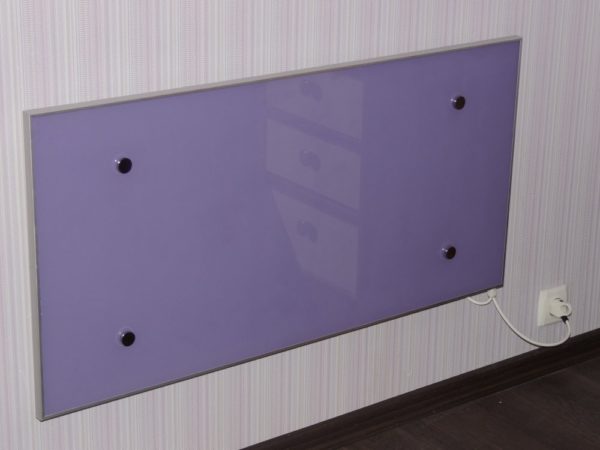
- Outdoor Heaters, for the most part, belong to mobile models, although they can be installed, for example, under a window, by analogy with central heating radiators. If at home there are small children or animals from the floor models it is better to refuse for security reasons. By the way, this model of heaters can also include film models that can be placed under a carpet or linoleum.
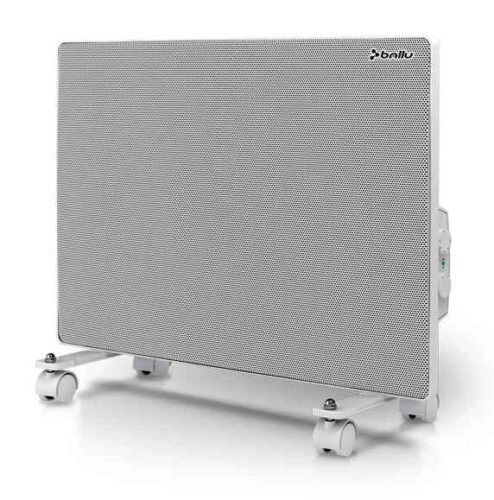
- Skirting IR devices, more suitable for additional heating. They are usually installed at the junction of walls and floors, and are often used to warm wet walls and to prevent them from freezing. The devices are small in size and are distinguished by their efficiency.
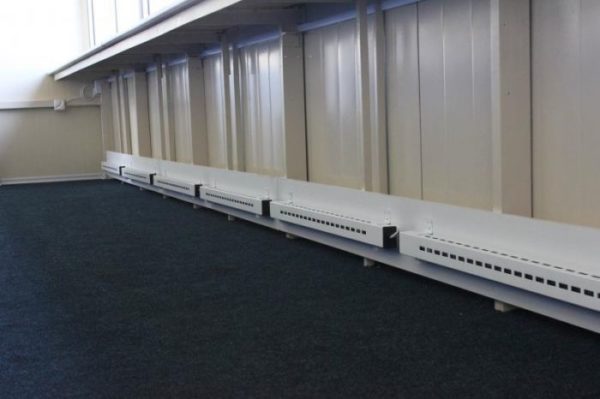
When choosing IR devices, you should also focus on their cost. The average price of Russian household heaters can be in the range of 3-5 thousand rubles, and imported - up to 8-10 thousand rubles. It is also worth considering that the cost of electricity consumption will be added to this cost.
Advantages and disadvantages of using IR heaters
Having decided to replace central heating with autonomous using infrared heaters, you should carefully study and compare their advantages and disadvantages.
Consider the pros:
- They are quite economical (heat objects in the room, which in turn share the heat with the surrounding space).
- Do not burn oxygen and do not dry out the air.
- During their work, combustion products and vapors are not emitted into the air, dust does not rise.
- Noiselessness in work.
- Instantly distribute heat when you turn on the network.
- Prevent the formation of mold, suspended dust in the house.
- Absolutely safe for people and animals, especially models of the long-wave type.
- Uses as energy the usual network 220V.
- To install them do not need any permissions, project documentation and approval.
- Durable, if necessary, they are easy to repair.
- They are easy to care for.
- Useful for the prevention of colds.
- To control devices, especially of the ceiling type, you can remotely using the control panel.
In addition to a large number of advantages, there are, of course, disadvantages, namely:
- Their cost is slightly higher than other heaters.
- A long stay under infrared rays can cause drowsiness, headache.
Conclusion
Infrared heating in foreign countries has long been used as both an additional and main source of heating. They are also becoming more and more popular with us. If necessary, they can completely replace the central heating in a house or apartment. The main thing when choosing an infrared heater as the main heating device, take into account all its characteristics (technical features, installation methods, where it is supposed to install, how much it will all cost, etc.) and match them with the parameters of your home.

/rating_off.png)






